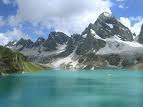 |
| TRAINING |
Millions are caught in the intensified crossfire,
Between Maoists and the security personals;
How many are suffering and losing?
Their beloved Parents or sibling or dear ones’?
Is this an India that has been free for 63 years?
Does India mean anything to them?
Gadchiroli, Dantewada, Jungalmahal!
The hotbeds of Red Revolution,
Truly India’s biggest internal security challenge.
Can these millions over there sing one day?
Can they laugh one day in freedom?
Why life has become a virtual hell in this Naxal Corridor?
No PDS reach, no Ambulance service, still in Dark Age,
No schools, no development, as it is risky,
When the menace will go?
Expose to such situation they are vulnerable and under fire,
If its’ Naxal Bandh everything out of Raod, a Bandh of life.
7 Naxal affected states and 36 districts
 |
| INDIA SUFFERS |
Suffering is not only in killing ?
(That happens because of Naxals or Security Forces)
Who often kill innocent?
But everyday existence has become real suffering,
Because everyday choice of this side or the other,
Brings constant fear and problem.
Both forces use and misuse them,
For anything that they do or even if they don’t,
 |
| INDIA BLEEDS |
Forced, molested and robbed by both.
Schools have become military barracks,
The children and youth find no means but join the Naxal Army.
Toting gun against police and others,
It is easy since this is seen by them from birth.
 |
| ARUNDATI IN THEIR MIDST |
They do realize of being at wrong end,
But by then it’s too late to turn.
Because once in, it’s tough to be out
(Only deaths do part them).
Naxal life as described isn’t glamorous?
No good homes, nor good food,
But living together only with basic needs.
 |
| TRAINING |
Civilization and their voice have faded in dense jungles,
Unheard and unanswered, the tales of their life stories!
Danger and death the two constant companions of people,
Suras and Asuras of today-the Naxalites or Security Forces,
Governed by two Sarkar- Official by day and Jungle by night.
 |
| ARMY PERSONAL SLAIN |
Oh! Truly sandwiched between! O my People!
The only solution seems leaving the land and their inhabitation.
But to where without the land and homes
No where!! Because it would mean top beg for life
What are the reasons?
Lack of development, social inequality,
 |
| TRAINING MAOIST |
A helpless situation, with neglect of Governmental care.
Here it seems 100% true!
Its’ either looting or shooting!!



















.jpg)